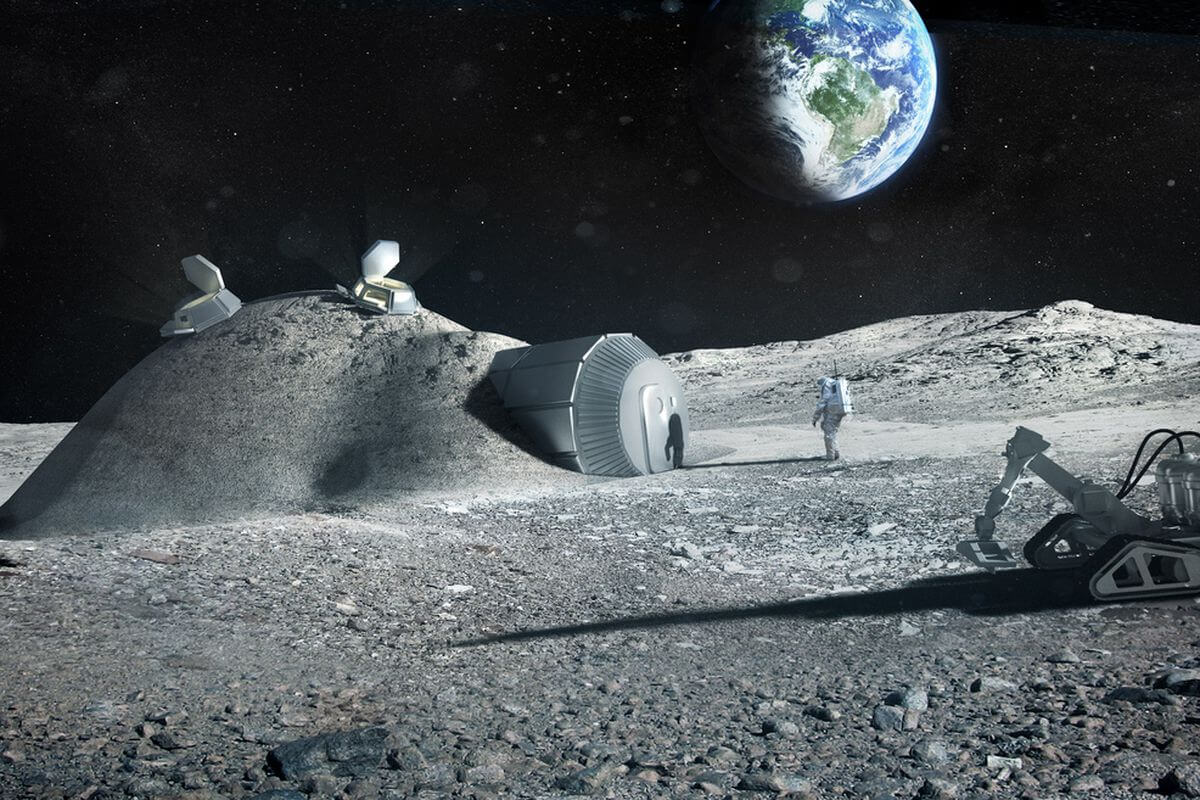
In October of this year, the Japanese satellite Selenological and Engineering Explorer (Selenological and technological research apparatus, or SELEN), also known as “Kaguya”, found a huge underground cave on the moon. A space width of 100 meters and a length of 50 kilometers immediately attracted the attention of scientists as a potential place to start a lunar colony. Some experts believe that the best place to live on the moon are just such caves.
After lunar probe found on surface of strange holes the size of 50 by 50 meters, the researchers decided to conduct radiostasionen these areas. The researchers came to the conclusion that these holes, in fact represents the outputs of the giant caves or tunnels, have sufficient structural strength and may contain deposits of ice and rock with a high concentration of water. And both of these would have been the perfect resources for fuel production.
Scientists suggest that these tunnels are about 3.5 billion years ago when the Moon was still volcanically active, flowed a river of molten lava. They are located near the lunar region called Marius Hills.
The Guardian, quoting Junichi Kharuyama, a senior researcher at the Japanese aerospace exploration Agency, writes that these lava channels “would be an ideal platform for creation of lunar bases. Having a stable temperature background and a solid structure, they are able to protect the people, tools and equipment from micrometeorites and cosmic radiation”.
The opening of these caves under the lunar surface and increase our hopes that one day on the Earth’s satellite will be built artificial settlements, and the use of the natural landscape of the moon will definitely help in solving some practical problems, experts say. It would seem that this is merely thinking out loud, but experts advise not to jump to conclusions. Yes, once the proposals for the establishment of a permanent human presence on the moon was viewed solely through the prism of science fiction. More recently, everybody agreed that such a project would be incredibly expensive both in terms of organization and implementation plan. However, recent technological advances tell us that now it is not so.
You may wonder if you want, but almost all the things achieved by mankind over the last few years, ranging from the development of self-driving cars and ending with toilets, able to effectively dispose of waste, can significantly help in reducing the cost of the Foundation of the lunar colony. The most optimistic forecasts say that its occurrence can be expected in 2022, according to the conclusions of the scientific journal New Space, made last year. If this is true, then any opportunities and technologies that will reduce the cost of its construction will be literally the weight of gold and will be most welcome.
I would like to be happy, but so far nothing. If we take into account only the United States and particularly its space Agency NASA, which spends on space exploration more than any other space agencies in the world, before this task will be powerless to bridge it. Current funding is insufficient in order to be able to fully begin to implement this plan. The space program “Apollo”, which allowed people to visit the lunar surface in 1969, cost the States $ 150 billion (by modern standards). Now the same numbers can look much more modest. In 2016 the Agency was allocated 19.3 billion dollars, and by 2017 — 19,65 billion dollars. Even according to the most optimistic version of the scientific journal New Space, the construction cost of the colony will be about $ 10 billion, i.e. more than half most of the Agency’s budget. Of course, NASA will not be able to master such a burden.
However, NASA is not required to do all by itself. The work of private companies like SpaceX and other space agencies such as ESA, in the same direction would, if not easier, then at least to unite efforts in achieving this goal. Modern experts generally agree that the basis of a lunar colony will be possible only if public and private companies, will make this a joint effort.
“America is unlikely to carry out more activity on the moon or Mars, if the country is the only participant in these events”, — said a senior researcher at NASA’s Chris McKay.
“What’s the point to play “king of the mountain”, if you are the only king who will crawl up that mountain? At the same time, if private companies or other States will want to establish their influence on the moon or Mars, the US just can’t resist the opportunity to compete and to take a leading position in this race.”
McKay believes that the life and experiments on the International space station have already shown that the level of development of technologies of life-support sufficiently high in order that a similar system could be used on the lunar station. The only thing we really lack, is technology that will turn around on the moon. However, and it soon may cease to be a problem. With regards to the same NASA, the Agency in may this year announced the search for private partners interested in mining the moon.
Latest discovery on the moon increases the chances of creating a lunar base, experts say
Nikolai Khizhnyak